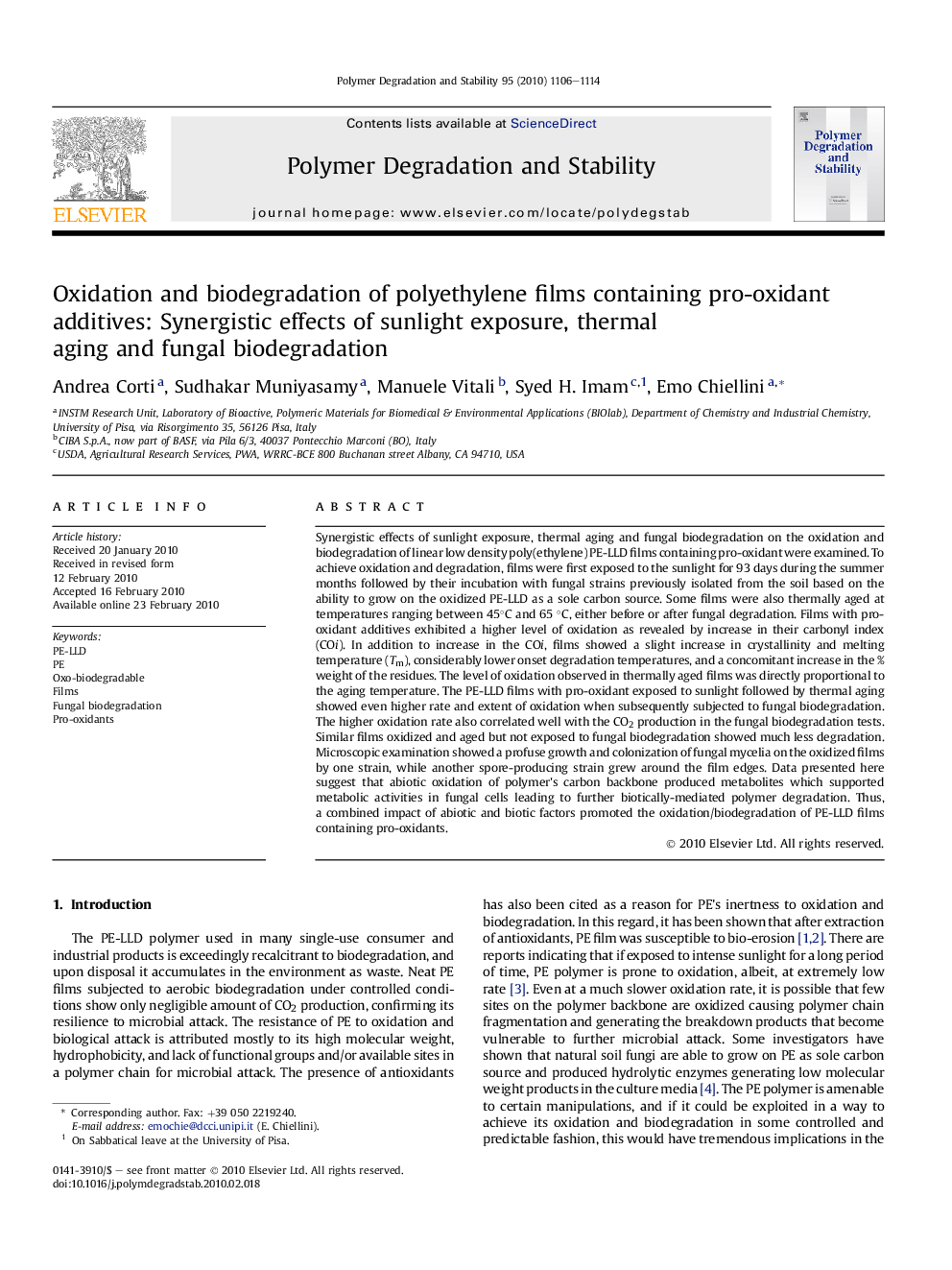| کد مقاله | کد نشریه | سال انتشار | مقاله انگلیسی | نسخه تمام متن |
|---|---|---|---|---|
| 5203863 | 1381942 | 2010 | 9 صفحه PDF | دانلود رایگان |
عنوان انگلیسی مقاله ISI
Oxidation and biodegradation of polyethylene films containing pro-oxidant additives: Synergistic effects of sunlight exposure, thermal aging and fungal biodegradation
دانلود مقاله + سفارش ترجمه
دانلود مقاله ISI انگلیسی
رایگان برای ایرانیان
کلمات کلیدی
موضوعات مرتبط
مهندسی و علوم پایه
شیمی
شیمی آلی
پیش نمایش صفحه اول مقاله

چکیده انگلیسی
Synergistic effects of sunlight exposure, thermal aging and fungal biodegradation on the oxidation and biodegradation of linear low density poly(ethylene) PE-LLD films containing pro-oxidant were examined. To achieve oxidation and degradation, films were first exposed to the sunlight for 93 days during the summer months followed by their incubation with fungal strains previously isolated from the soil based on the ability to grow on the oxidized PE-LLD as a sole carbon source. Some films were also thermally aged at temperatures ranging between 45°C and 65 °C, either before or after fungal degradation. Films with pro-oxidant additives exhibited a higher level of oxidation as revealed by increase in their carbonyl index (COi). In addition to increase in the COi, films showed a slight increase in crystallinity and melting temperature (Tm), considerably lower onset degradation temperatures, and a concomitant increase in the % weight of the residues. The level of oxidation observed in thermally aged films was directly proportional to the aging temperature. The PE-LLD films with pro-oxidant exposed to sunlight followed by thermal aging showed even higher rate and extent of oxidation when subsequently subjected to fungal biodegradation. The higher oxidation rate also correlated well with the CO2 production in the fungal biodegradation tests. Similar films oxidized and aged but not exposed to fungal biodegradation showed much less degradation. Microscopic examination showed a profuse growth and colonization of fungal mycelia on the oxidized films by one strain, while another spore-producing strain grew around the film edges. Data presented here suggest that abiotic oxidation of polymer's carbon backbone produced metabolites which supported metabolic activities in fungal cells leading to further biotically-mediated polymer degradation. Thus, a combined impact of abiotic and biotic factors promoted the oxidation/biodegradation of PE-LLD films containing pro-oxidants.
ناشر
Database: Elsevier - ScienceDirect (ساینس دایرکت)
Journal: Polymer Degradation and Stability - Volume 95, Issue 6, June 2010, Pages 1106-1114
Journal: Polymer Degradation and Stability - Volume 95, Issue 6, June 2010, Pages 1106-1114
نویسندگان
Andrea Corti, Sudhakar Muniyasamy, Manuele Vitali, Syed H. Imam, Emo Chiellini,